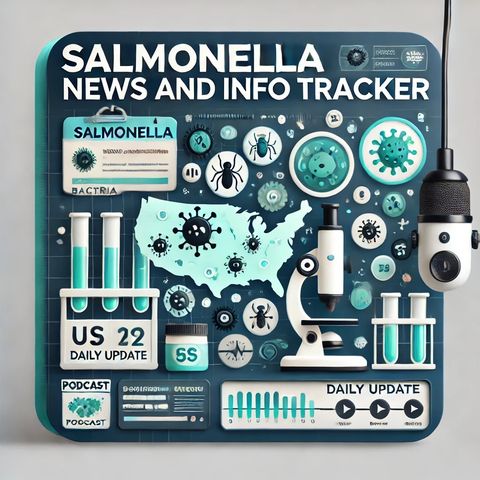Stay Safe from Salmonella: Essential Food Safety Tips After Severe Weather Events

Sign up for free
Listen to this episode and many more. Enjoy the best podcasts on Spreaker!
Download and listen anywhere
Download your favorite episodes and enjoy them, wherever you are! Sign up or log in now to access offline listening.
Stay Safe from Salmonella: Essential Food Safety Tips After Severe Weather Events
This is an automatically generated transcript. Please note that complete accuracy is not guaranteed.
Description
After severe weather events such as hurricanes, floods, and tornadoes, the risk of foodborne illnesses, particularly from pathogens like Salmonella and E. coli, can increase significantly. These natural disasters often...
show moreSalmonella, a common cause of food poisoning, is a bacteria typically found in raw or undercooked meat, poultry, eggs, and dairy products. However, following severe weather events, the contamination risk extends to a broader range of foods. Floodwaters can carry sewage and other contaminants into homes and food storage areas, increasing the potential for Salmonella exposure.
To reduce the risk of Salmonella and other foodborne illnesses after severe weather, it is crucial to focus on food safety practices. Keeping a few essential strategies in mind can make a significant difference in protecting your health:
1. **Assess the Water Supply:** Contaminated water is one of the primary vehicles for spreading Salmonella. After a severe weather event, check local advisories about water safety. If there is any doubt about water quality, boil it before use or rely on bottled water for drinking, cooking, and cleaning foods.
2. **Food Inspection:** Examine all food items carefully. If your food has come into contact with floodwaters—especially if it's not canned or sealed airtight—it's safer to discard those items. Perishable foods that have been unrefrigerated for more than two hours should also be thrown away, as Salmonella thrives at higher temperatures.
3. **Refrigeration and Freezing:** Power outages are common after severe weather, and they can compromise your ability to keep foods adequately refrigerated or frozen. A refrigerator kept closed will maintain a safe temperature for about four hours, while a full freezer will stay cold for about 48 hours. Use thermometers in your fridge and freezer to ensure food safety, discarding any food that has been above 40°F for more than two hours.
4. **Cooking Practices:** Proper cooking can kill Salmonella bacteria. In post-disaster situations, make sure to cook foods thoroughly—poultry should reach an internal temperature of 165°F, ground meat 160°F, and other meats like steak and pork 145°F.
5. **Hygiene:** Hand washing cannot be emphasized enough, especially when preparing and eating food. Use soap and safe, clean water, and if those aren't available, use an alcohol-based sanitizer. Clean all surfaces and utensils with disinfectants to reduce the risk of contamination.
The Centers for Disease Control and Prevention (CDC) frequently updates safety guidelines and provides resources to help communities manage the aftermath of severe weather.
Natural disasters can put added stress on public health systems, making individual vigilance critical. By understanding the risks and implementing these protective measures, individuals and families can significantly reduce the incidence of Salmonella and other foodborne illnesses, maintaining health and safety even in challenging environments.
Information
| Author | QP-4 |
| Organization | William Corbin |
| Website | - |
| Tags |
Copyright 2024 - Spreaker Inc. an iHeartMedia Company
